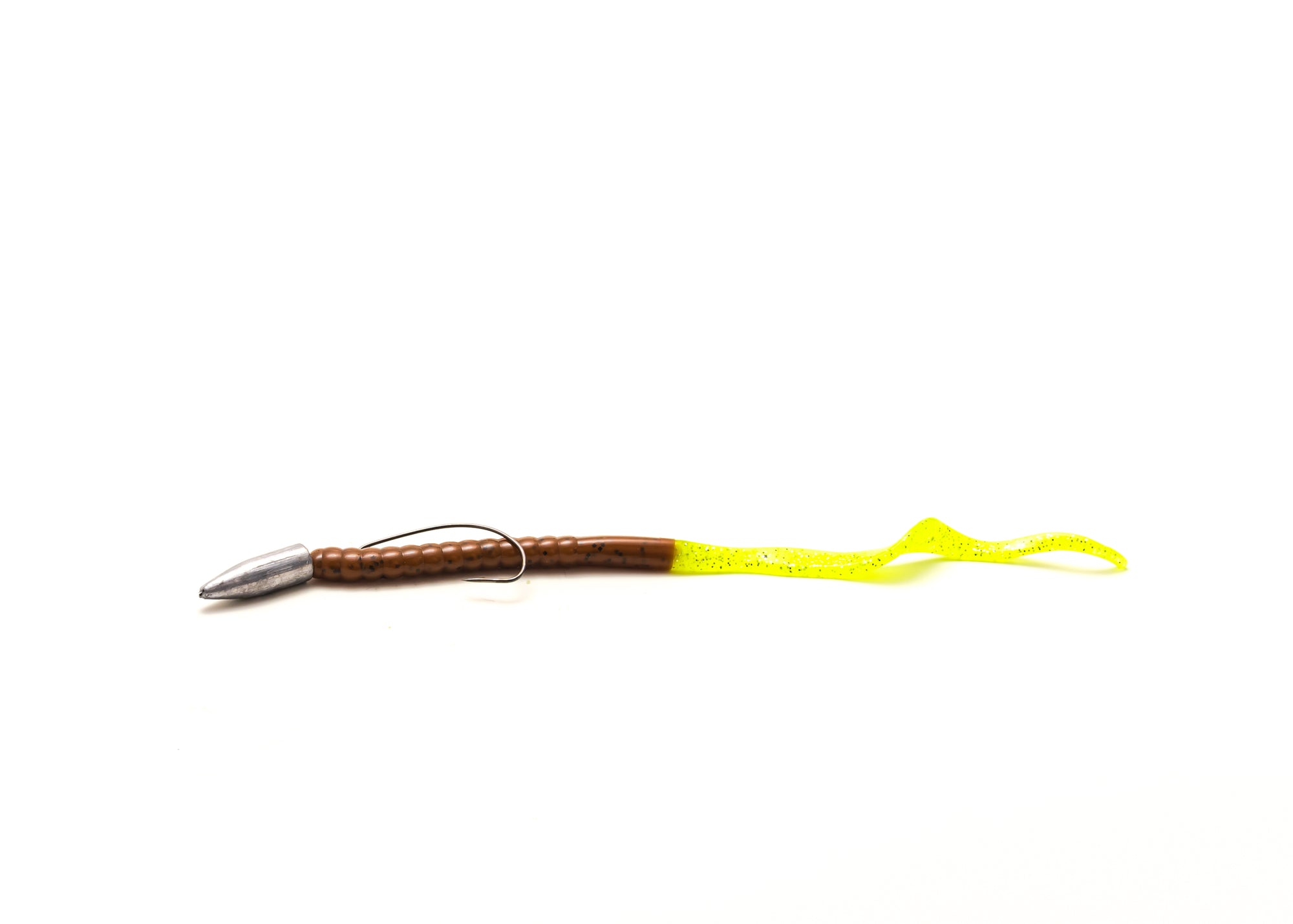Fishing the Texas Rig for Bass: An Introduction for Success

Mastering the Texas Rig is Essential if you want to be serious about your Bass Fishing. Here we give you an introduction to the method and hopefully put another bass catching method in your arsenal.
The Texas Rig is one of the most versatile and effective setups in bass fishing, beloved by amateur and professional anglers alike. This simple yet effective rigging method allows the bait to move naturally, making it irresistible to bass.
In this beginner's guide, we'll delve into how to fish a Texas Rig to maximize your success in catching bass.
What is a Texas Rig?
The Texas Rig consists of a soft plastic bait (like a worm or creature bait) threaded onto a hook with a weight fixed above it on the line. This setup is designed to make the bait weedless and snag-free (mostly), allowing anglers to work through heavy cover and structure where bass like to hide, such as weeds, logs, and rocks.
Equipment You Need for a Texas Rig
To get started with Texas Rig fishing, you'll need the following basic equipment:
-Rod: A medium-heavy to heavy action rod, about 6.5 to 7.5 feet long, is ideal for Texas Rig fishing. This gives you the backbone needed to handle big bass and the sensitivity to feel subtle bites.
-Reel: A baitcasting reel is preferred for its accuracy and control, though a spinning reel can also be used, especially for lighter rigs. Check out our selection of reels.
-Line: Fluorocarbon line is favored for its invisibility underwater and abrasion resistance, important when fishing in heavy cover. A 12-20 lb test line is typical.
-Hooks: Use a sharp, offset worm hook for best results. The size of the hook should match the size of the bait, generally ranging from 3/0 to 5/0.
-Weights: Bullet weights are commonly used with Texas Rigs. The weight can vary from 1/8 oz to over 1 oz, depending on the depth of the water and the amount of cover.
-Bait: Soft plastics such as worms, lizards, or craws are effective. Choose colors based on water clarity and conditions. My personal favorite is the Berkley Power Worm 7" in a variety of colors.
Setting Up Your Texas Rig
1. Thread the Bullet Weight: Start by sliding the bullet weight onto your line, pointed end first.
2. Attach the Hook: Tie your hook to the line using a Palomar knot for strength and reliability.
3. Rig the Bait: Insert the hook point into the top of the bait about a quarter inch down, bring it out, and slide the bait up to the eyelet of the hook. Then, rotate the hook so the point can be reinserted into the body of the bait, making it weedless. Ensure the bait hangs straight to avoid unnatural movements.

Sample Texas Rig Setup


Leave a comment